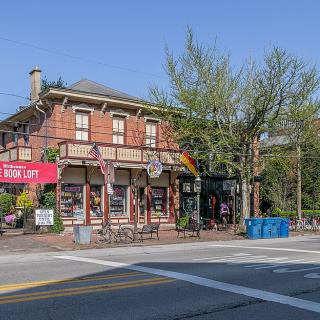Experts on children, youth, and college students never tire of spouting superficial generalizations about the relative ease or difficulty of growing up over time. They seldom define their terms, specify age ranges, present systematic data, or pay attention to either socio-historical context or patterns of difference.
This issue is central to our understanding of higher education and its current challenges. In his Higher Ed Gamma Blog, Inside Higher Education, July 26, 2022, Steven Mintz asks, “Has Childhood Changed?” Mintz counters Larry Cuban’s confused response to the ill-formed question “Are today’s children different than children in the 1890s?”—No. (Cuban, “Are Today’s Children Different than Children in the 1890s” (https:larrycuban.wordpress.com/2022/07/25/are-todays-children-different-...)) Mintz outlines some of the changes to which Cuban alludes that contradict his overall assertion. Both historian Mintz and educationist Cuban confuse basics.
I make several objections that redirect our thinking. First, the question itself is poorly framed and ahistorical. How could “childhood” or “children”—which are not the same thing—not change over almost a century and a quarter? Second, it is impossible to generalize about “childhood” or “children” as an undifferentiated whole. There are far too many differences. Neither has existed as a single category. Differences among young people—by class, gender, race, ethnicity, geography, experience, and age itself, as well as individual distinctions—are powerful if not independently determinative.
This is a fundamental contribution of studies in the once-new field of studies since the 1960s. Both Mintz and I are contributors to that. (See Mintz, Huck’s Raft: A History of American Childhood (Harvard University Press, 2004); Graff, Conflicting Paths: Growing Up in America (Harvard University Press, 1995). See also Mintz, “How to Ease the Path to Adulthood,” Higher Ed Gamma,” Inside Higher Education, July 5, 2022) But generalizations derived from sources descriptive of and prescriptive to the broad middle classes continue to substitute for evidence and understanding of “Other Peoples’ Children,” as we once deemed them, with all the irony and contradictions that that phrase conveys..
Third is the persisting confusion of prescriptive evidence—advice to the young, moralisms, educationese, and therapeutics—with descriptive evidence from diverse quantitative and qualitative sources. For example, Mintz agrees with Cuban that more children today than in the 1890s “are raised in single-parent homes and experience their parents’ divorce.” This assertion ignores early parental death, desertion, and informal separations, all of which were commonplace. In statements that a lack of change in 130 years is the dominate pattern, Cuban ignores almost all meaningful indicators, decades of research, and descends into biological determinism.
To reinforce my argument, I turn to college students since the 1960s. There are profound changes, many of them more negative than positive, that refute Cuban starkly and Mintz in part. My evidence synthesizes my own and others’ social, cultural, intellectual, political, and economic historical and more recent research. I combine it with my observations as an undergraduate at a medium-sized private Northwestern University in the late 1960s, a graduate student at the moderately large central city University of Toronto in the first half of the 1970s, and a professor at two new suburban public universities in Texas and one very large urban university in Ohio, all in large cities. The hard and soft data range over more than 50 years and include my wife and my current friendships with undergraduates and recent graduates.
Contra-Cuban, change is the name of the game. “Myths” of changlessness, progress, or rises and falls are ideological, not documented historical conclusions. The US college student population, led by whites, began its modern transformations after World War II between the GI Bill and the expansion of public educational systems. Despite massive, continuing changes, the experiences of late adolescent and early adult growing up of post-secondary students form a baseline that is too often ignored with assertions about “unprecedented” later changes.
In a brief essay, I risk overgeneralization but my argument is all based on documentation. Recognizing contradictions as we must, my generation of early to mid-Baby Boomers attended an expanding order of colleges of an increasing variety amidst conflicts over race, gender, and civil rights; urban and suburban changes; the Vietnam War; and a modern technologizing economy, which all contributed to rising enrollments. Many factors too often associated with the 1980s and later played in the 1960s and early 1970s. Business and STEM programs were growing. Students felt familial and economic pressures in our choices of majors and thinking about careers. Other factors, fundamental to more humane and flexible patterns of growing up mediated.
Thus, at the same time, it was a more open, optimistic, social, interactive, and broadly educational time. In my historian’s judgment, the period represented for many (though not all) an unusually positive moment for both American higher education and growing up toward greater maturity.
From our freshman dormitories to classrooms—and more open spaces in between them, students interacted and mixed across many lines, much more, and more actively than in recent decades. A full year’s Advancement Placement credits allowed me to take only a small number of very large lecture courses; carefully selected, those few that proved to be excellent. Our graduate teaching assistants were better trained and more conscientious that many would be later. Intellectual, social, cultural, and political interests brought undergraduates and graduate students together more often than became common later.
Although we screamed loudly when tuition in my final year reached $600/quarter, both my future wife and I balanced costs with scholarships, small loans, small family contributions, and in her case a work-study job. We each graduated with debts of about $2000 which we paid off easily. That made a world of differences.
Most distinctive in hindsight and in my comparisons over the decades are faculty-student relationships. Faculty were must more involved in student advising than they/we became, even though there were non-faculty general education advisors. My faculty advisor expected to see his advisees, and we complied. He also invited me home to have dinner with his family.
That he was from an old New England family and Princeton-educated and I was an urban Jewish Sixties campus radical was irrelevant to him. He offered to write recommendations for any fellowships or graduate student applications that I selected. Especially memorable are the hours we spent in his wood paneled, book-lined office, literally pouring over the then print-only American Historical Association Guide to Departments of History selecting a range of aspirational, solidly challenging, and relatively certain admission graduate programs. (See my continuing explorations: “Academic collegiality is a contradictory self-serving myth,” Times Higher Education, Feb. 10. 2022; “Collegiality needs a reboot,” Times Higher Education, Mar. 7, 2022; “Myths Shape the Continuing ‘Crisis of the Humanities,’” Inside Higher Education, May 6, 2022; “Universities are not giving students the classes or support they need,” Times Higher Education, May 17, 2022; “The best scholarship is political but with no ideological stamp,” Times Higher Education, July 26, 2022; “On teaching and learning/Learning in teaching,” Inside Higher Education, forthcoming; “Lessons from the 1960s/The 1960s: Origins of our times: The personal, political, and paths to rediscovering universities,” Against the Current, forthcoming; My Life with Literacy: The Continuing Education of a Historian. The Intersections of the Personal, the Political, the Academic, and Place, forthcoming.
Faculty varied in their politics and their expressiveness in part by age and field of study but not consistently. Some welcomed conversations and intensive interactions; some integrated current events—almost always when relevant—into courses, office hours, or social events. Faculty and students were often—not always—interested in each other as people of different ages and experiences and mutual teachers and learners.
Unlike more recently, strong arguments when clearly articulated and presented with evidence were not condemned as “politicized” or “presentist.” They were considered objective. (See my “The best scholarship is political”) This was an important element of students and future scholars making multiple, enriching, and enlightening connections.
I recall no overt hostility to the young campus radicals, the first Black student government president and first Black student strike, and broad support for the massive one-week student strike that followed admission of US bombing of North Vietnam and the Kent State student massacre in May 1970. I was a member of the History Department faculty-student reforms committee that originated in those events. It was a profound learning experience.
These relationships, and their inseparable basis in mutual teaching and learning across ages, ranks, experiences, personal politics, and the like, heightened in graduate studies where a number of professors led by my graduate supervisor became lifelong friends and colleagues. They never relinquished their always constructive criticism. That is another loss over the decades.
Over the last three or more decades, these once central elements have all but disappeared. Both growing up—late adolescence and early adulthood—have narrowed and darkened. Fears of straightened economic futures, from parents, universities themselves, popular culture, and peers, are far too great for 18—22 year olds to confront without an active role for faculty or genuinely student-oriented Student Life or Student Affairs programs. Or as our student tenant neighbors often remind my wife and me, without other adult relationships, central to growing up. As one exceptional quadruple major with his puppy in training by his side told me “You know, we’re still young, and we sometimes need help.” I heard him but his professors and his much too large, disorganized, and mismanaged university cannot.
My very bright undergraduate friends have no personal relationships with their professors, very little with their non-faculty advisors, and, exacerbated by the pandemic, very few close fellow student friendships beyond those with whom they share rental houses. Most experience various degrees of anxiety, insecurity, and sometimes depression, with or more often without help... University health services and counseling are rarely adequate. 21 and 22 years often talk about “burnout.” They are a new “lost generation.”
With narrowing of general education to reflect interests of competing disciplinary clusters rather than the broader needs of undergraduates, and departments, colleges, and/or schools competing for budget-accruing credit hours, teaching, learning, and both the aspirational and lived “college experience” are shadows of their former selves. Maturing for adulthood shrinks between the lines of higher education’s spreadsheets.
------------------------------------------
Harvey J. Graff is Professor Emeritus of English and History at The Ohio State University and inaugural Ohio Eminent Scholar in Literacy Studies. Author of many books on social history, the history of literacy and education, and interdisciplinarity, he writes about the history and contemporary condition of higher education for Times Higher Education, Inside Higher Education, Academe Blog, Washington Monthly, Publishers Weekly, Against the Current; Columbus Free Press, and newspapers. Searching for Literacy: The Social and Intellectual Origins of Literacy Studies is published by Palgrave Macmillan in August. My Life with Literacy: The Continuing Education of a Historian. The Intersections of the Personal, the Political, the Academic, and Place is forthcoming. He thanks undergraduate friends, former students, and colleagues of all ages and orientations.



